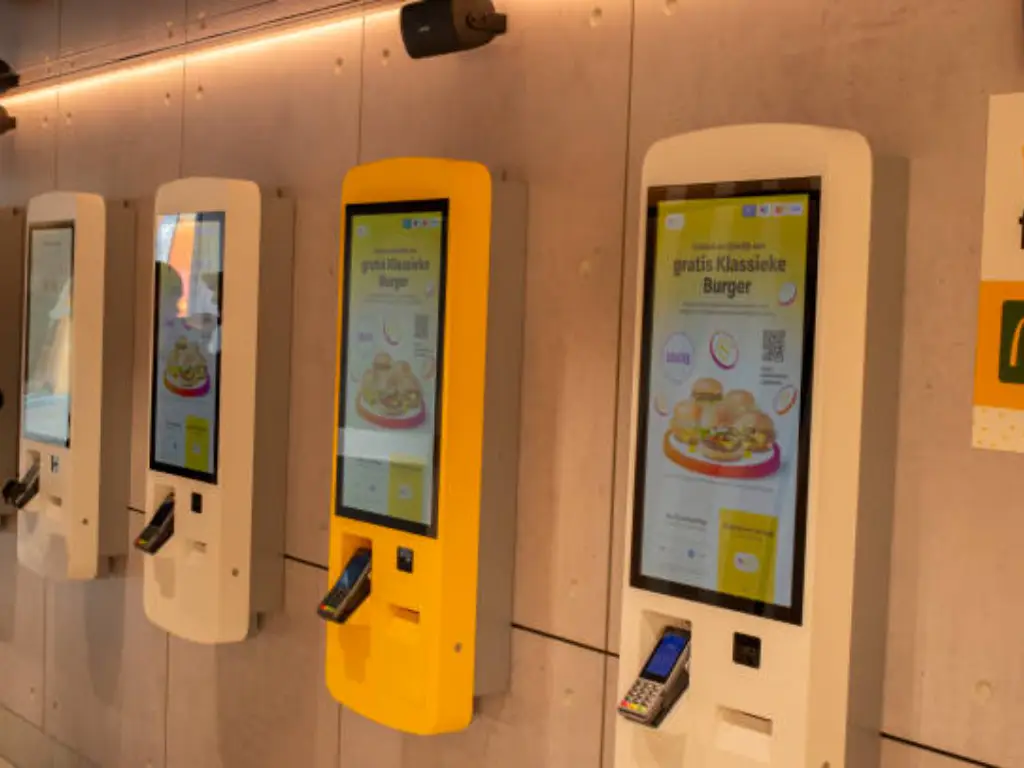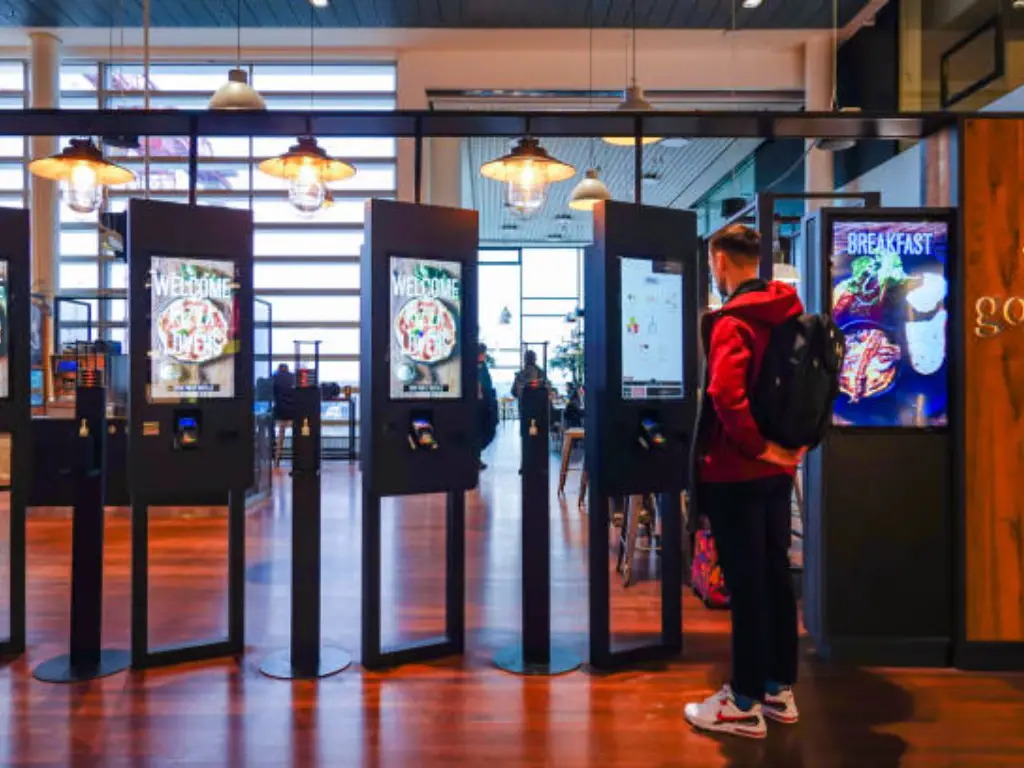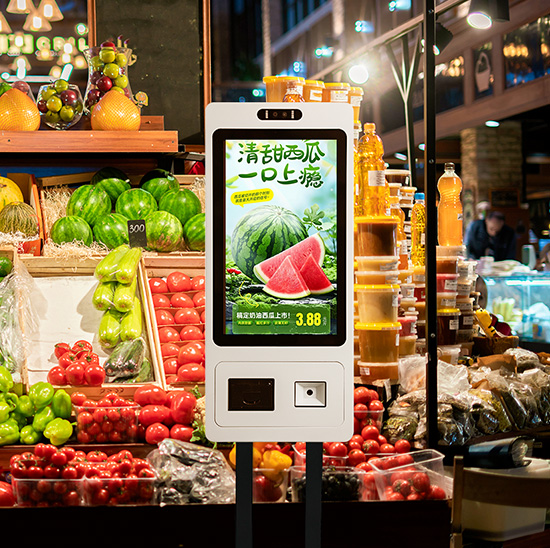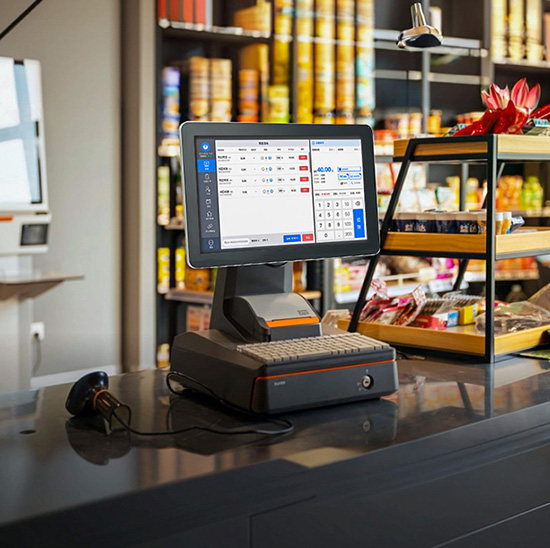Self-ordering kiosks have quickly become a staple in various industries, especially in fast food chains, restaurants, and retail stores. But what exactly are they, and why should we care? Let’s dive into the major benefits of self-ordering kiosks and explore how they can transform the way businesses operate and how customers experience services.
What is a Self Ordering Kiosk?

At its core, a self-ordering kiosk is an interactive, touch-screen terminal that allows customers to place their orders without the need for human interaction. Think of it as the digital version of a traditional counter. These kiosks can be found in fast-food restaurants, cafes, retail outlets, and even airports. They typically feature an easy-to-use interface that guides the user through menu selections, payment, and sometimes even order tracking.
The main selling point? They empower customers to take control of their ordering experience, without relying on a cashier to input their choices. But the benefits don’t stop there. Self-ordering kiosks streamline the process, reduce wait times, and ultimately improve the customer experience.
So, why are these kiosks gaining traction? Let’s explore the evolution of these devices to understand how they became so essential today.
The Evolution and Current Trends of Self Ordering Kiosks
To truly appreciate the benefits of self-ordering kiosks, it’s important to look at where they came from. The concept of self-service isn’t new. Think back to when the first vending machines were introduced. They allowed customers to bypass the need for a human cashier. Over time, the evolution of technology brought us digital kiosks, which revolutionized customer interaction in industries ranging from dining to retail.
In the early 2000s, fast-food chains like McDonald’s and Burger King started experimenting with self-ordering kiosks. Initially, these machines were seen as an expensive and somewhat unnecessary addition to the business model. However, as technology improved and consumer preferences shifted towards more automated, personalized services, the demand for these kiosks grew.

Today, self-ordering kiosks are equipped with advanced features like customization options (for dietary restrictions, preferences, etc.), multilingual support, and even integration with loyalty programs. The trend now leans towards a seamless blend of physical and digital experiences. This is why the self-ordering kiosk benefits go beyond speed—they also cater to modern customers’ desire for personalization and efficiency.
The pandemic accelerated this trend, as businesses sought ways to minimize human interaction while maintaining customer service standards. But this shift towards automation was already in motion before COVID-19, and it’s here to stay. Kiosks are becoming smarter, faster, and even more intuitive, making them a vital part of any forward-thinking business strategy.
The Benefits of Self Ordering Kiosks
The benefits of self-ordering kiosks are numerous, and if you’re a business owner considering this technology, it’s time to weigh in on how they can improve both your operational efficiency and customer satisfaction.
1. Enhanced Customer Experience
One of the primary reasons why self-ordering kiosks are becoming so popular is their ability to enhance the customer experience. By providing customers with a faster, more personalized way to order, businesses can reduce long lines and wait times. Customers can take their time reviewing the menu, making choices without feeling rushed. No pressure, just a relaxed and hassle-free experience.
2. Improved Accuracy
Human error in order taking happens—it’s natural. But with kiosks, the potential for mistakes is significantly reduced. Customers enter their orders directly, ensuring accuracy and reducing the chances of errors due to miscommunication or distractions.
3. Operational Efficiency
Self-ordering kiosks improve the efficiency of operations by automating the order-taking process. This allows employees to focus on other tasks like food preparation or customer service. In the long run, this leads to a more productive workforce and faster service.
4. Increased Order Volume
Since self-ordering kiosks help speed up the ordering process, businesses often experience an increase in order volume. Customers can place their orders quickly, and the time saved on order-taking can be reinvested into faster preparation or customer service. This leads to higher revenue opportunities, especially during peak hours.
5. Cost Savings
Another benefit is cost savings. While the initial investment in self-ordering kiosks can be significant, over time, they help reduce labor costs. With fewer employees required to take orders, businesses can allocate resources more effectively.
6. Better Data Collection
Self-ordering kiosks collect valuable data about customer preferences, ordering patterns, and even peak hours. This data can be analyzed to optimize inventory management, staff scheduling, and marketing strategies. It gives businesses a clearer picture of what their customers want and when.
The benefits don’t end there. As technology continues to evolve, self-ordering kiosks are becoming more sophisticated, incorporating things like AI, machine learning, and even facial recognition. As we move forward, their potential for improving both the customer experience and operational performance is only set to increase.
Factors to Consider When Investing in Self Ordering Kiosks

Before diving into the world of self-ordering kiosks, it’s important to consider a few key factors that can influence the success of your investment. These factors go beyond just the initial cost and should be carefully evaluated to ensure the kiosk aligns with your business goals.
1. Initial and Ongoing Costs
While the upfront cost of self-ordering kiosks might seem steep, it’s essential to consider the long-term savings they offer. However, be sure to account for not only the installation costs but also ongoing maintenance and software updates. Make sure your business is ready to support these additional expenses.
2. Customer Base and User Experience
Will your customers be comfortable with self-ordering kiosks? If your target market consists of tech-savvy individuals, they may embrace the change. But for businesses serving older generations or customers less familiar with technology, introducing kiosks may require additional training or support to ensure a smooth transition.
3. Integration with Existing Systems
How well will the kiosk integrate with your current point-of-sale (POS) system and inventory management? Ensuring seamless integration will make operations smoother and reduce the chances of technical glitches that could disrupt customer experience or operations.
4. Customization and Features
Different kiosks come with varying features. Consider what’s most important for your business, whether it’s multilingual support, loyalty program integration, or customizable menu options. Tailoring the kiosk to meet your specific needs can maximize its effectiveness.
5. Space and Layout
Lastly, consider the physical space in your business. Will the kiosk fit seamlessly into your current layout, or will it require redesigning the space to accommodate it? Proper planning for placement is essential for maximizing customer engagement.
Advanced Features and Innovations in Self Ordering Kiosks

Gone are the days when self-ordering kiosks were simple order-taking machines. Today’s kiosks come packed with a range of advanced features designed to provide both businesses and customers with a richer, more efficient experience.
1. Customization Options
Modern kiosks allow customers to customize their orders to an unprecedented degree. From adjusting the ingredients of a sandwich to selecting specific dietary preferences (vegan, gluten-free), customers can enjoy a fully personalized ordering experience.
2. Loyalty Program Integration
Many kiosks are integrated with customer loyalty programs, meaning that customers can earn rewards directly from the kiosk. This feature encourages repeat business and increases customer engagement.
3. Multilingual Support
In diverse, globalized markets, offering multilingual support is a major advantage. Self-ordering kiosks can cater to different languages, making them more accessible to a broader customer base.
4. Real-Time Order Updates
Some kiosks allow customers to track their orders in real-time, providing transparency and reducing any anxiety about wait times. Customers can see when their food or product is ready, improving their overall satisfaction.
5. Contactless Payment
With the rise of digital wallets and NFC (Near Field Communication) technology, self-ordering kiosks are incorporating contactless payment options, which aligns with the growing demand for hygienic, touch-free transactions.
The rapid innovation in kiosk technology means that businesses are constantly offered new ways to enhance customer experiences and operational efficiency. And as these systems evolve, the self-ordering kiosk benefits will continue to expand.
Meet TouchWo
Since 2009, TouchWo has been a trusted manufacturer and supplier of touch screen products, offering an impressive annual production capacity of 200,000 units. Specializing in OEM and ODM solutions,our self-service ordering kiosks are designed to meet the needs of modern businesses.
Ready to elevate your business with cutting-edge self-service technology? Contact us today to explore how our solutions can streamline your operations and enhance customer experience.



